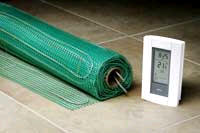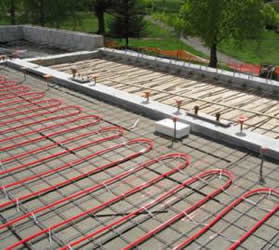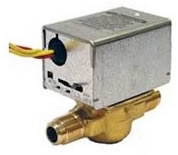
Sunroom
The major problem that homeowners have with their sunrooms is that they can get far too hot in the summer months and far too cold in the winter months. If you are considering adding a sunroom on your home you want to be able to use it all year around, hence, you must consider how you will heat and cool it.
The construction of most sunrooms is not what one would call energy efficient. Compared to normal house construction, most sunrooms will lose heat at a rate 5 to 10 times faster. There are a few things that the homeowner can do to reduce the heat loss from their sunroom.
- The installation of energy efficient windows.
- The addition of window blinds
Although the addition of energy efficient windows and window blinds will help to trap heat inside the sunroom they are still not sufficient to maintain comfortable temperatures throughout winter months.
If you live in an area that gets cold winters and you want to be able to use your sunroom all year around, you will have to consider augmenting the heat generated by the sun and adding supplemental heating to your sunroom.
There are a few different methods that you can use to provide supplemental heat to your sunroom:
Underfloor electric radiant heating
Electric underfloor radiant heating, as shown in Figure 2, consists of a heating element encased in a mesh carrier which is laid under the finished flooring and a thermostat which allows the homeowner to control the heat within the boundaries of the sunroom.
Electric underfloor radiant heating has become very popular as supplemental heating in bathrooms, basements and kitchens. It is easy to install and the homeowner does not pay any penalty with respect to having exposed heating which can complicate the placement of furniture, overall décor and the aesthetics of the sunroom.

Figure 2 - Mesh with radiant heat wire and thermostat
When electric radiant underfloor heating first came onto the market, it could only be used under certain types of flooring, primarily ceramics and natural stones. Hardwood flooring and cork were generally frowned upon because of problems with drying out the materials and causing them to bow and crack. Newer underfloor radiant electric heating systems can be used under most flooring without concern for damage. However, the homeowner should contact the manufacture of the underfloor radiant electric heating system that they are planning on using for advise on flooring materials.
Additional information on underfloor electric radiant heating.
Selection of underfloor electric radiant heating parts
Underfloor radiant hydronic heating systems.
Hydronic radiant underfloor heating systems, as shown in Figure 3, use a network of pipes carrying hot water to heat the floor. This heat then radiates throughout the room.
If you currently have hot water heating, then the implementation of hydronic radiant underfloor heating could be a good method of heating your sunroom. The hydronic radiant underfloor system is invisible and hence there are no problems with placing furniture in the room. It also allows you to decorate the room in any manner without having to work around heating obstacles.

Figure 3 - Hydronic hot water system being installed on concrete slab

Figure 4 - Hydronic hot water system zone valve
You will have to ensure that your hot water boiler has the capacity to handle the additional square footage of the sunroom. In most cases the output of the boiler can be zoned using a zone valve, as shown in Figure 4, so that you can control the hot water going to the sunroom without affecting the temperature in the rest of the home.
Additional information on underfloor hydronic radiant heating.
